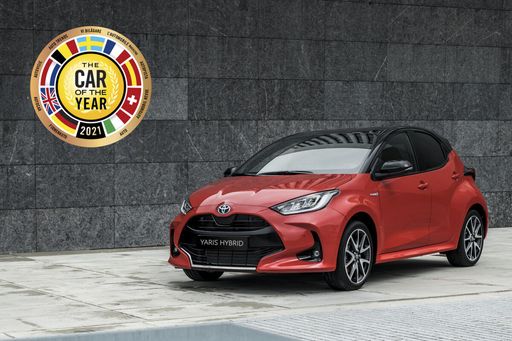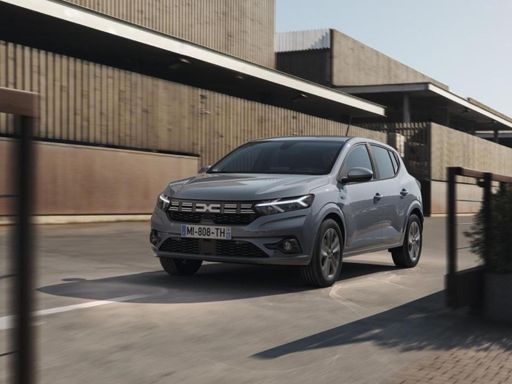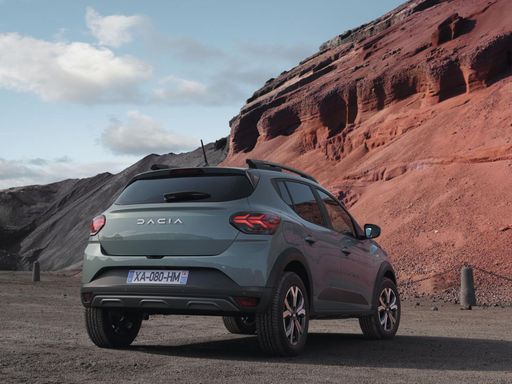Dacia Sandero vs Toyota Yaris - Differences and prices compared
Costs and Efficiency:
When it comes to price and running costs, the biggest differences usually appear. This is often where you see which car fits your budget better in the long run.
Dacia Sandero has a significantly advantage in terms of price – it starts at 10700 £, while the Toyota Yaris costs 21900 £. That’s a price difference of around 11152 £.
Fuel consumption also shows a difference: Toyota Yaris manages with 3.80 L and is therefore clearly perceptible more efficient than the Dacia Sandero with 5.30 L. The difference is about 1.50 L per 100 km.
Engine and Performance:
Under the bonnet, it becomes clear which model is tuned for sportiness and which one takes the lead when you hit the accelerator.
When it comes to engine power, the Toyota Yaris has a clearly edge – offering 280 HP compared to 110 HP. That’s roughly 170 HP more horsepower.
In acceleration from 0 to 100 km/h, the Toyota Yaris is convincingly quicker – completing the sprint in 5.50 s, while the Dacia Sandero takes 10 s. That’s about 4.50 s faster.
In terms of top speed, the Toyota Yaris performs noticeable better – reaching 230 km/h, while the Dacia Sandero tops out at 183 km/h. The difference is around 47 km/h.
There’s also a difference in torque: Toyota Yaris pulls convincingly stronger with 390 Nm compared to 200 Nm. That’s about 190 Nm difference.
Space and Everyday Use:
Cabin size, boot volume and payload all play a role in everyday practicality. Here, comfort and flexibility make the difference.
Seats: offers more seating capacity – vs .
In curb weight, Dacia Sandero is barely noticeable lighter – 1089 kg compared to 1090 kg. The difference is around 1 kg.
In terms of boot space, the Dacia Sandero offers a bit more room – 328 L compared to 286 L. That’s a difference of about 42 L.
In maximum load capacity, the Dacia Sandero performs somewhat better – up to 1108 L, which is about 173 L more than the Toyota Yaris.
When it comes to payload, Toyota Yaris to a small extent takes the win – 525 kg compared to 436 kg. That’s a difference of about 89 kg.
Who comes out on top?
Overall, the Toyota Yaris shows itself to be leaves the rival little chance and secures the title of DriveDuel Champion.
It convinces with the more balanced overall package and proves to be the more versatile choice for everyday use.
 @ Toyota Motor Corporation
@ Toyota Motor Corporation
Toyota Yaris
Costs and Consumption
View detailed analysis
Engine and Performance
View detailed analysis
Dimensions and Body
View detailed analysis
Dacia Sandero
The Dacia Sandero is the everyman's hatchback — unpretentious, practical and brilliantly affordable, with sensible space and straightforward charm where it matters most. It won't wow in the premium lane, but for buyers who want honest, dependable transport without showroom theatrics, the Sandero is a clever, no‑nonsense pick that keeps running costs low and grin levels high.
details @ Dacia / Renault Group Media
@ Dacia / Renault Group Media
 @ Dacia / Renault Group Media
@ Dacia / Renault Group Media
 @ Dacia / Renault Group Media
@ Dacia / Renault Group Media
Toyota Yaris
The Toyota Yaris is a sprightly city hatch that packs clever packaging, surprising comfort and fuel-sipping manners into a neat, easy-to-park package. It rewards sensible buyers with low running costs, friendly ergonomics and a forgiving drive, delivered with Japanese reliability and just enough personality to make errands feel a little less ordinary.
details @ Toyota Motor Corporation
@ Toyota Motor Corporation
 @ Toyota Motor Corporation
@ Toyota Motor Corporation
 @ Dacia / Renault Group Media
@ Dacia / Renault Group Media
|
 @ Toyota Motor Corporation
@ Toyota Motor Corporation
|
|
|
|
Costs and Consumption |
|
|---|---|
|
Price
10700 - 16700 £
|
Price
21900 - 46700 £
|
|
Consumption L/100km
5.3 - 7.1 L
|
Consumption L/100km
3.8 - 9.5 L
|
|
Consumption kWh/100km
-
|
Consumption kWh/100km
-
|
|
Electric Range
-
|
Electric Range
-
|
|
Battery Capacity
-
|
Battery Capacity
-
|
|
co2
105 - 140 g/km
|
co2
87 - 215 g/km
|
|
Fuel tank capacity
32 - 50 L
|
Fuel tank capacity
36 - 50 L
|
Dimensions and Body |
|
|---|---|
|
Body Type
Hatchback
|
Body Type
Hatchback
|
|
Seats
5
|
Seats
4 - 5
|
|
Doors
5
|
Doors
3 - 5
|
|
Curb weight
1089 - 1209 kg
|
Curb weight
1090 - 1356 kg
|
|
Trunk capacity
328 L
|
Trunk capacity
141 - 286 L
|
|
Length
4088 - 4099 mm
|
Length
3940 - 3995 mm
|
|
Width
1848 mm
|
Width
1745 - 1805 mm
|
|
Height
1499 - 1535 mm
|
Height
1455 - 1500 mm
|
|
Max trunk capacity
1108 L
|
Max trunk capacity
935 L
|
|
Payload
404 - 436 kg
|
Payload
289 - 525 kg
|
Engine and Performance |
|
|---|---|
|
Engine Type
Petrol, LPG
|
Engine Type
Full Hybrid, Petrol
|
|
Transmission
Manuel, Automatic
|
Transmission
Automatic, Manuel
|
|
Transmission Detail
Manual Gearbox, CVT
|
Transmission Detail
CVT, Manual Gearbox, Automatic Gearbox
|
|
Drive Type
Front-Wheel Drive
|
Drive Type
Front-Wheel Drive, All-Wheel Drive
|
|
Power HP
67 - 110 HP
|
Power HP
116 - 280 HP
|
|
Acceleration 0-100km/h
10 - 16.7 s
|
Acceleration 0-100km/h
5.5 - 9.7 s
|
|
Max Speed
158 - 183 km/h
|
Max Speed
175 - 230 km/h
|
|
Torque
95 - 200 Nm
|
Torque
390 Nm
|
|
Number of Cylinders
3
|
Number of Cylinders
3
|
|
Power kW
49 - 81 kW
|
Power kW
85 - 206 kW
|
|
Engine capacity
999 cm3
|
Engine capacity
1490 - 1618 cm3
|
General |
|
|---|---|
|
Model Year
2024 - 2025
|
Model Year
2024 - 2025
|
|
CO2 Efficiency Class
D, C, E
|
CO2 Efficiency Class
B, G
|
|
Brand
Dacia
|
Brand
Toyota
|
What drive types are available for the Dacia Sandero?
The Dacia Sandero is available as Front-Wheel Drive.
The prices and data displayed are estimates based on German list prices and may vary by country. This information is not legally binding.
